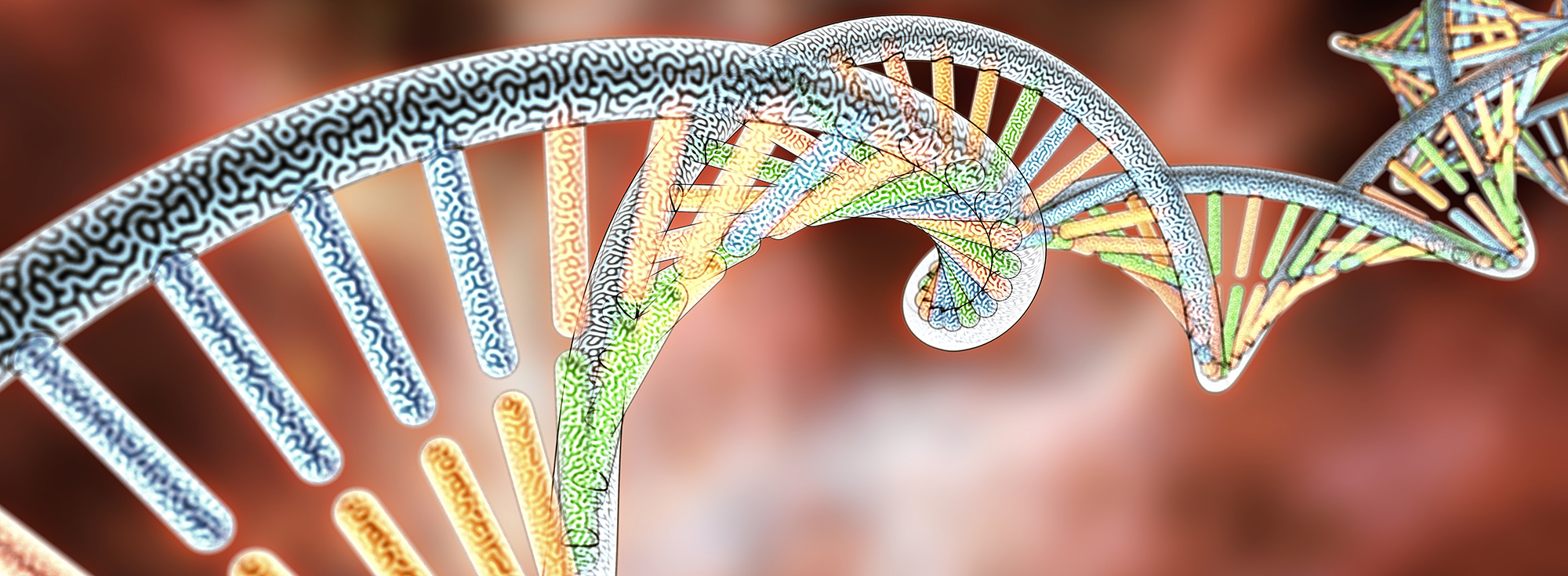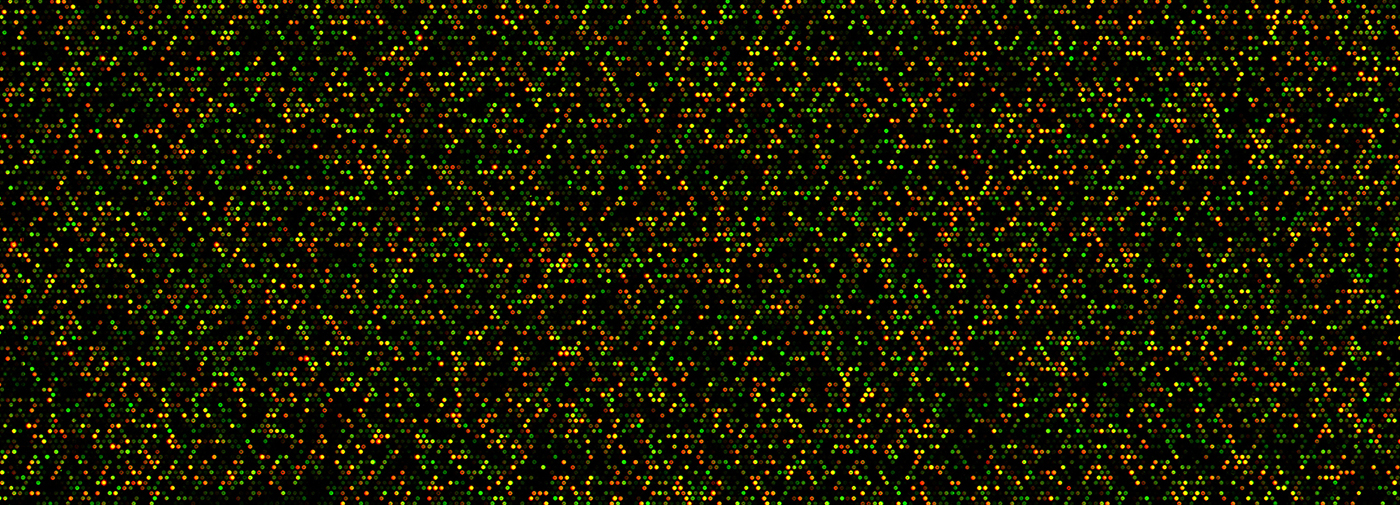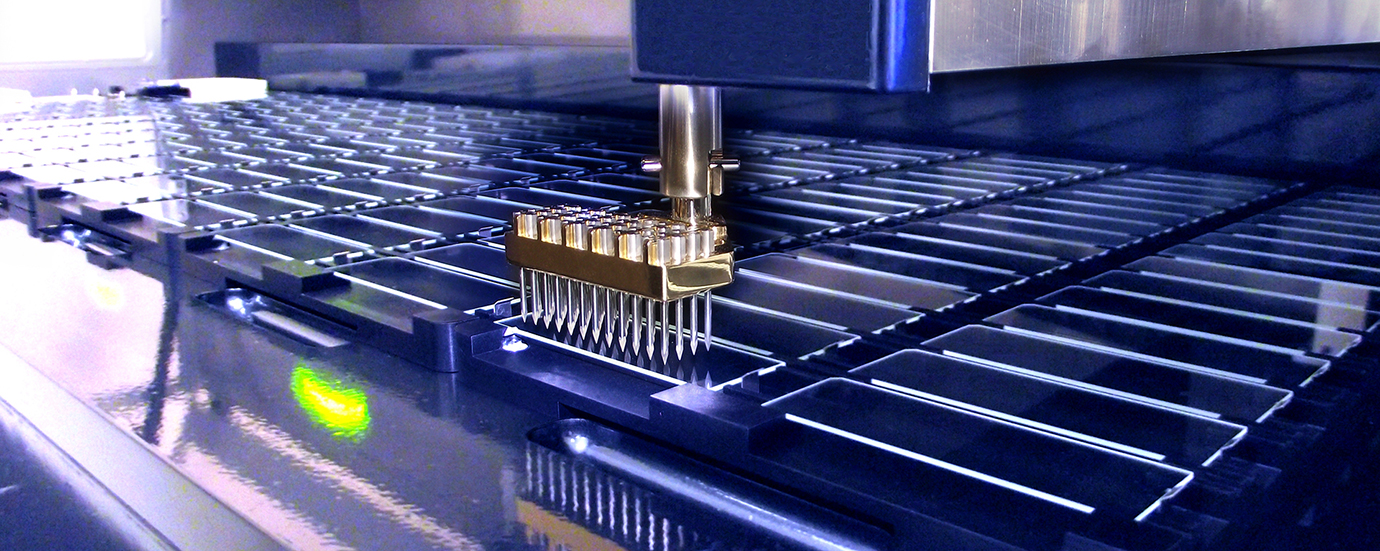



The microarray, or “biochip”, invented at Stanford University in 1995 is a cornerstone technology for measuring a very large number of genes simultaneously with unprecedented speed and accuracy. In 2012, Spiriplex began discussions with an elite team of scientists to consider the possibility of using the power of microarray technology as a testing platform to overcome the many limitations of ELISA (Enzyme-linked immune-sorbent assay) technology currently in use for allergy testing.
With the performance characteristics of the protein microarray already well established, it did not take long to determine that it was ideally suited for allergen specific IgE (Immunoglobin E) proteins and that it could become the next generation technology for the future of allergy testing. Working with leading scientists in the field, that vision has been realized and is called Allergenex!
In the specific application for Allergenex, the biochip is “nano-spotted” with purified allergen proteins covalently immobilized on a specialized glass slide. Covalent binding of the allergens to the slide enables very stringent processing conditions with extremely high specificity and sensitivity.
The biochip is a grid of allergen proteins printed as miniaturized spots approximately the same diameter as a strand of hair. A single glass slide can easily accommodate several hundred microarray test spots.
In addition to the purified allergen protein “test spots”, each biochip includes positive controls and negative controls eliminating well-to-well variability. Simultaneous triplicate testing of each allergen with controls produces highly accurate and repeatable results. The patient’s blood sample binds to the IgE antibodies in each test spot in the same manner as an allergic reaction in the body. The binding of antibodies to the allergen proteins creates a quantifiable signal that varies in intensity depending on the number of IgE antibodies present.
The Allergenex detection method provides precise counts of the number of fluorescent standard units (FSUs) across a 10,000-fold dynamic range of light intensity. Using proprietary software, the FSUs are analyzed and quantified to generate an easy-to-read lab report.
Using the Allergenex proprietary blood collection kit in the clinician’s office, four spots of blood are collected from a simple finger stick. The need to draw several tubes of blood from the arm is eliminated.
Collection of the blood sample in the clinician’s office assures 100% patient compliance. No separate appointment and/or visit to the lab for blood collection by a phlebotomist is necessary.
Simultaneous testing of 28 common food allergens, 40 common inhalant allergens or 68 combined food & inhalant allergens and Total IgE in triplicate with controls eliminates the well-to-well variability associated with ELISA testing.
Enhanced kinetics of the biochip accelerates binding and the speed of test processing, resulting in efficient work flow and turnaround times superior to ELISA systems.
Each patient sample is tested for all allergens simultaneously in triplicate, with positive and negative controls, for unsurpassed precision and accuracy. Each sample includes Total IgE and 28 common food allergens, 40 common inhalant allergens or 68 combined food & inhalant allergens. The dramatic test redundancy of the microarray platform enables high sensitivity and specificity values that are >90%.
The high specificity and sensitivity of the microarray combined with 28 common food allergens, 40 common inhalant allergens or 68 combined food & inhalant allergens and Total IgE delivers superior positive/negative predictive values to clinicians as compared to smaller regional profiles performed with ELISA systems.
Allergen concentration and purity standardization coupled with advanced microarray technology provide high precision and consistent results.
All microarrays are calibrated and quantified for excellent dependability.
Comparisons to skin testing and other ELISA methods demonstrate agreement in clinical indications.
Microarray manufacturing is performed in Class 1 clean rooms using advanced equipment and industry standardized operating procedures.
Purified and standardized allergen extracts are utilized in the microarray manufacturing process to assure consistent and repeatable results.
In summary, ease of blood collection, improved patient compliance, an expanded allergen profile and Total IgE with strong predictive values provide significant advantages to both clinicians and patients over current ELISA methods.